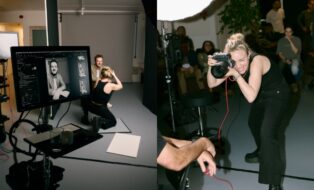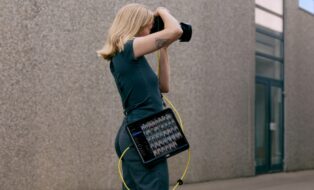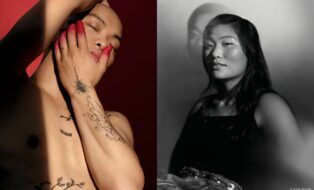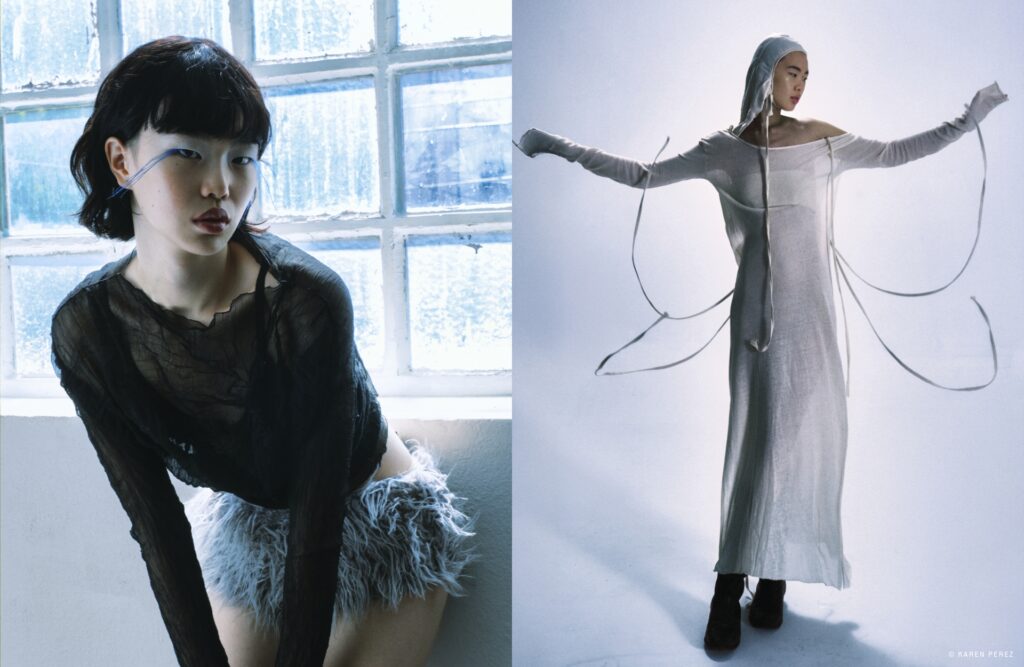
Francis Tama, visual creator and founder of post-production studio Casa Dusk, has a strong editorial eye and is the creative mind behind many fashion, beauty, and still-life photoshoots.
In spring, Francis took on the creative direction of Starlight, a fashion editorial for PAP Magazine. Featuring delicate contrasts between light and shadow, rich textures, and emotive color palettes, the editorial was built with intention: clean, calm, and focused.
What makes Starlight unique, is that it was created entirely remotely. Francis decided to collaborate with people he’d met while living abroad, after he’d connected deeply with them both personally and creatively. Starlight, conceptualized by Tama and Casa Dusk studio, was the result of a harmonious collaboration, a shared visual language and trust.
We asked Francis to tell us about the project’s concept, how Capture One made the remote creative direction possible, and the team’s collaborative process. Here’s what he shared.
Can you tell us a bit about the concept and story behind this shoot?
Starlight was born from the desire to explore softness, distance, and connection — even when everything is done remotely. The editorial reflects a quiet intimacy, a subtle presence between light, shadow, and a touch of melancholy.
Some time ago, I lived in Argentina and met people with whom I connected deeply, both personally and creatively. I wanted to find a way to keep creating with them, regardless of distance. That’s when I reached out to my dear friend Karen Pérez, a photographer with whom I share a unique connection and a subtly intertwined aesthetic, and Ignacio Mora, an exceptional makeup artist whose sensitivity and vision I trust completely.
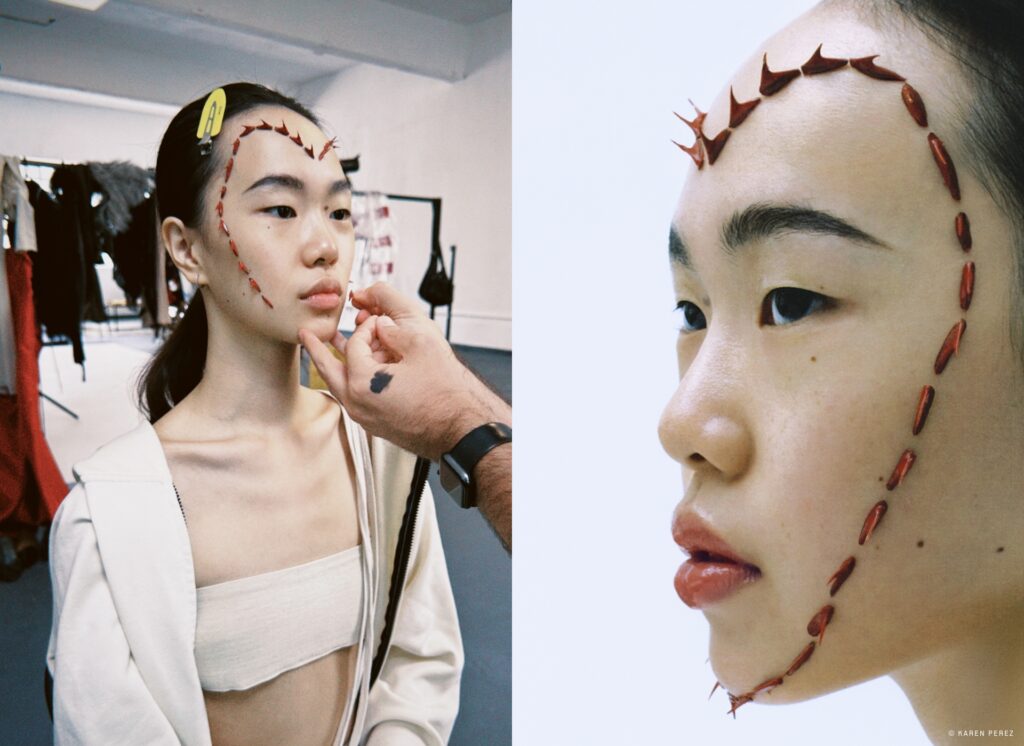
Because this was my first time fully directing a project remotely, it was essential for me to collaborate with a team I felt creatively aligned with. Starlight became not only a creative exploration, but also a way to reconnect and co-create across space — guided by intuition, trust, and a shared visual language. I wanted the images to feel cinematic yet delicate, like small moments suspended in time.
What was your approach to planning the shoot?
Since I wasn’t going to be physically present, the planning had to be precise and intentional from the very beginning. I created a detailed mood board with references for color, framing, light direction, and emotional atmosphere. One of the things I value most is when each person brings their own feedback to the mood board — it makes the project feel more alive and collaborative.
I worked closely with Karen, who was in charge of photography, and shared with her not only visual guides but also emotional cues — how I wanted the story to feel, the rhythm of the moments, and how light should move around the subject. Ignacio Mora, our makeup artist, interpreted the vision beautifully, starting from our model Estrella’s features and building a look that blended nature and skin: glossy reds, feather lashes in primary blue, and a natural hair texture that enhanced her unique presence.
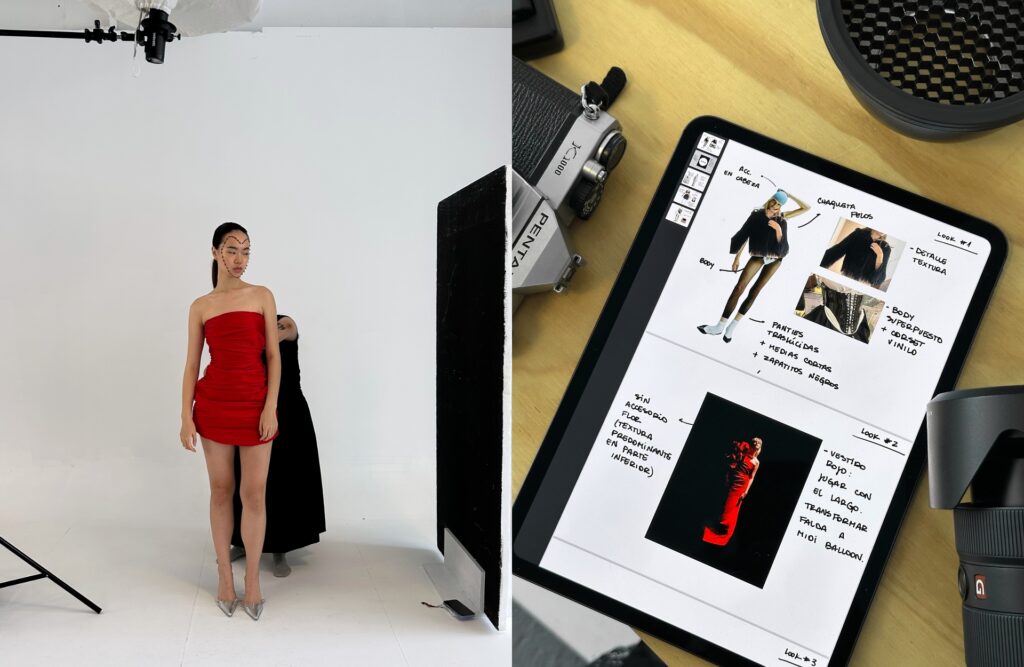
Carla Alzarise, who handled styling, is a brilliant multidisciplinary creative. She translated each look exactly as I imagined it, adding layers of texture and narrative to the shoot.
The location was also key — we needed a clean, all-white studio where we could play with both natural light and flash. That flexibility allowed us to shape the softness and contrast we were looking for, and gave the entire shoot a quiet, versatile energy.
How did Capture One fit into your workflow during the shoot?
Capture One was the main tool — and honestly, the most essential part — of making this remote shoot possible. I connected virtually during the session and was able to see the images in real time via tethering. This allowed me to make key decisions on the spot — adjusting exposure, color balance, and curves — without physically being on set.
Karen shot tethered directly into Capture One, which to me is the most accurate and efficient way to work in studio. It gave us a clear, controlled environment where we could refine the image in real-time and maintain consistency with the original mood board.
After the shoot, we continued the workflow with Casa Dusk, my post-production studio, where we ran different visual exercises based on what we captured. Throughout the process, Capture One helped us hold on to the emotional starting point — the essence of what Starlight was meant to be.

Are there any specific tools or features in Capture One that you relied on heavily?
Absolutely. Beyond the essentials like Color Balance and Curves, I worked a lot with Base Characteristics to set the right starting point for color and contrast. It gave me a clean and flexible foundation to build the look we had envisioned.
The Layers and Masks system — especially the new AI Masking tools — was incredibly helpful for making precise, delicate adjustments. We used them to subtly isolate skin, clothing, and background elements without interrupting the natural flow of the image.
Tools like Clarity and Film Grain added a final layer of tactility — giving the images a slightly filmy, organic feel. It helped reinforce that sense of softness and atmosphere we were after: something a little imperfect, very human, and above all, ethereal.
Before the shoot, we had a meeting with the Casa Dusk retouching team to review the production plan and give feedback on key elements like lighting, makeup products, and details we needed to keep in mind on set. That gave us a strong visual guideline for maintaining consistency across the process.
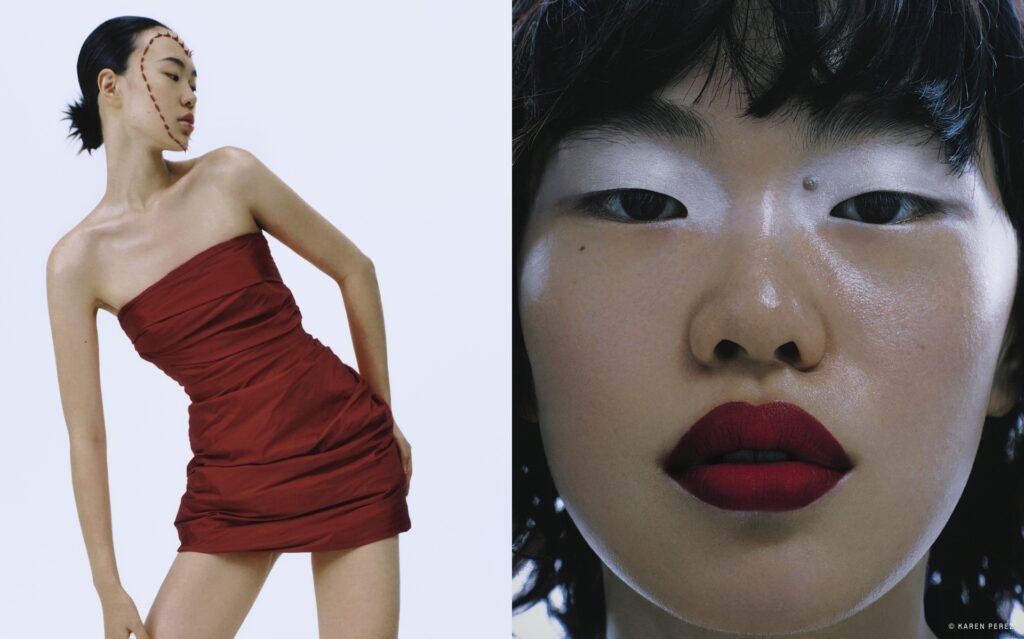
After the shoot, we regrouped and agreed that the retouching should be minimal and respectful. The focus was on cleaning small distractions — floor details, threads, minor blemishes — while keeping the skin untouched and honoring the model’s features and the makeup exactly as they were captured.
Did your post-processing end up evolving the original concept?
In a way, yes — but not by changing it, rather by deepening it. The original concept was always meant to feel intimate, minimal, and emotionally quiet. Post-processing became the space where we could refine that vision without over-polishing it.
Through subtle adjustments in color tones, clarity, and texture, we enhanced what was already there — not to transform it, but to preserve its honesty. Working with Casa Dusk, we were very intentional about maintaining that softness and atmosphere, always staying close to the visual and emotional core of the mood board.
So, while the essence remained the same, post allowed us to lean even further into the ethereal quality we wanted — that fine line between reality and something slightly dreamlike.
What was the biggest challenge during this shoot, and how did you tackle it?
The biggest challenge was directing everything remotely — not being on set meant I had to rely fully on preparation, clarity, and trust. There’s something very vulnerable about guiding a team from afar, especially when the project is so personal.
To make it work, we invested a lot of time beforehand: aligning on mood boards, light direction, product choices, and overall emotional tone. We also held a meeting with the post-production team before the shoot to flag important details that would affect both capture and retouch — that helped build a shared visual language across every stage of the process.
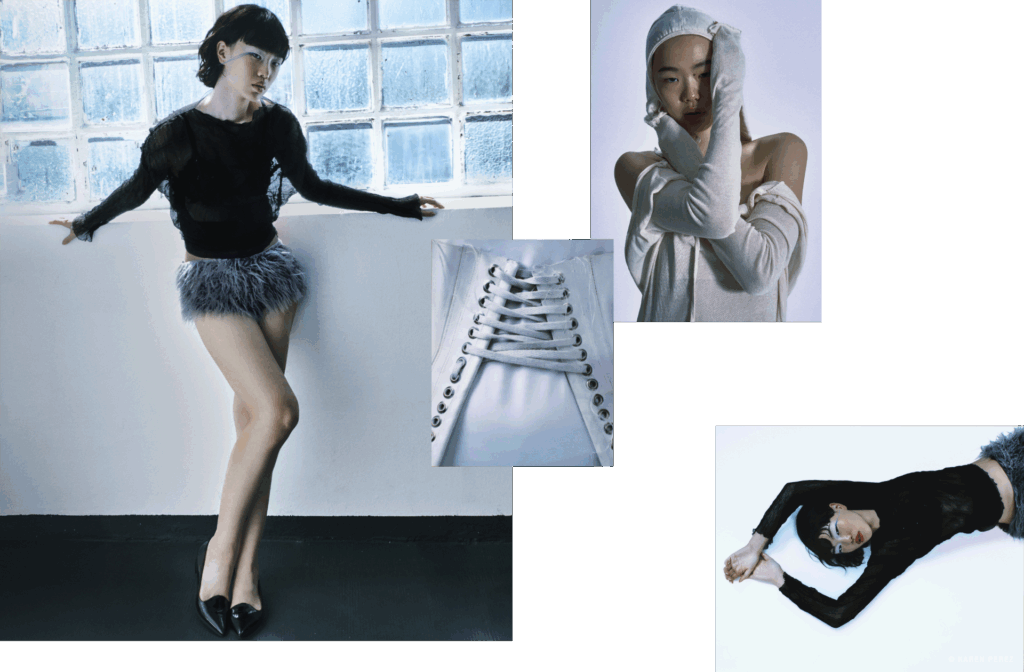
During the shoot, I stayed connected virtually and gave live feedback through Capture One. It became my eyes on set. But more importantly, I worked with a team I truly trusted — Estrella, Karen, Ignacio, Carla, Piero — people who understood the essence of the project and could carry it forward with sensitivity and intuition.
Distance became part of the story. Instead of limiting us, it helped shape Starlight into what it is: something soft, quiet, and built on connection.
What does it require to document a shoot as you’ve done here?
It requires clear direction, sensitivity, and an editorial mindset.
For me, documenting a shoot isn’t about capturing everything — it’s about curating what matters. As a creative director, I approach documentation with the same eye I use for the final images: I think in sequences, in frames that communicate feeling, and in details that reveal process without breaking the magic.
Even though I wasn’t on set, I made sure the documentation reflected the mood and aesthetic of Starlight. I gave the team specific visual guidelines — what kind of moments to capture, how to treat the light, what textures or movements to focus on. That way, everything aligned with the atmosphere we were building.
It takes intention, a deep understanding of your concept, and the ability to guide others toward the same visual rhythm — even in the smallest behind-the-scenes capture.
Do you have a favorite image or moment from the shoot?
I actually have two favorite images from the shoot — both speak to different sides of what Starlight represents for me.
The first is the portrait where Estrella’s face is framed by red spikes. I love the tension in that image — the strength in her gaze, the contrast of the sharp red forms against her softness. There’s something powerful and feminine about it, and the composition creates an atmosphere that feels cinematic and interpretive, almost like stepping into a dream.
The second is the look with the blue feather lashes and red lips. What fascinates me in this image is the play between minimalism and richness. The textures — her skin, the soft feathers, the tulle top — and the bold yet harmonious color palette all come together in a very intentional way. It’s visually quiet, but emotionally charged.
Both images feel timeless to me — like stills from a film I’d want to watch over and over.

What are you hoping people will take away from the images?
I hope people feel something quiet — something they can’t fully explain but that stays with them. Starlight was created to hold space for softness, presence, and introspection. It’s not loud or fast; it invites you to slow down and pay attention to the small things: light on skin, color against texture, a gesture in between thoughts.
I also hope it challenges the idea that intimacy has to be personal or direct. Sometimes it’s in the atmosphere — in the way an image breathes, in how it makes you feel seen without being obvious.
If the images leave someone feeling curious, calm, or emotionally connected — even for a moment — then I think the project did what it was meant to do.
Finally, any advice you’d give other photographers?
Be honest with your vision — and learn to communicate it with care.
Creative direction is as much about clarity and leadership as it is about ideas. Knowing how to guide a team, how to make people feel seen and involved, is what gives a project emotional depth. The more you trust your collaborators and stay open to their input, the more powerful — and surprising — the result becomes.
Also, don’t be afraid of simplicity. There’s strength in subtlety — in letting the image breathe, in choosing what not to overdo, and in focusing on what truly matters.
And maybe most importantly: don’t wait for the perfect conditions to create. Lead with what you have, use your resources wisely, and keep building your visual language with intention. If the energy and direction are clear, everything else tends to fall into place.
See more of Francis’ work on Instagram and get to know the rest of the team behind Starlight:
Photography: Karen Perez
Model: Estrella Lin
H&M: Ignacio Mora
Styling: Carla Alzarise
Photography Assistant: Piero Culotta
Concept and Post-Production: Casa Dusk
New to Capture One? Try for free for 7 days.
